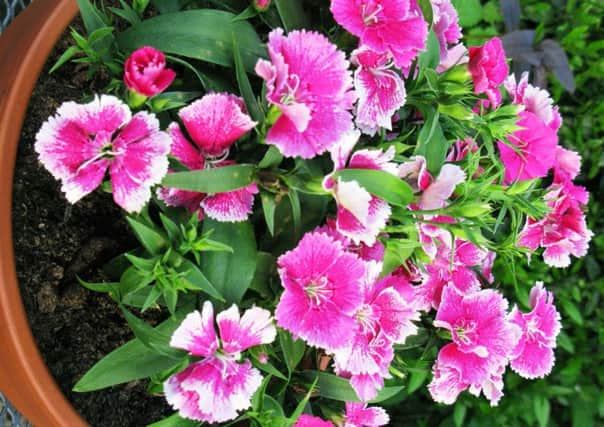Gardening: Garden work is never done


No sooner is the spring-cleaning finished, than it’s time to prepare container plants for summer; and then autumn, and winter, and spring yet again. What goes around comes around and that’s the way with gardening
The big problem with summer is that people go on holiday – which means that plants are usually left to fend for themselves. You can pack off the family pet to catteries and the canine equivalent, but plants in pots tend to stay put.
Advertisement
Hide AdAdvertisement
Hide AdSo, if you are a serious gardener and you have lots of plants in containers, it will probably pay you to invest in a watering system. Small pipes are laid around the garden and even smaller offshoots lead off into individual pots. While you’re enjoying the heat of the Mediterranean, your plants are enjoying the English ‘summer’ and are guaranteed a regular watering.
Alternatively, persuade or bribe a reliable neighbour to pop round on a regular basis to do the watering. So, that’s the summer taken care of but with container plants it’s best to be prepared for all four seasons – so now we move on to autumn
This is a busier time with container-grown plants. Throw out the annuals and empty their pots. Re-fill them with fresh compost and re-plant with winter-flowerers or spring bulbs.
Then fast forward to winter.
Protect vulnerable plants by taking then indoors or into a greenhouse; alternatively, if the plant in question is moderately hardy and the container isn’t too big, dig a hole outdoors and plunge the pot and its contents into the soil. Hopefully, when the frosts come, they won’t be able to penetrate deep enough to do any damage.
Advertisement
Hide AdAdvertisement
Hide AdAnd watch out when you’re watering. Normally, it’s not necessary in winter, because the majority of plants will be dormant and won’t need liquid refreshment. The more water in as pot, the greater the chance of frost damage.
And then we are back to spring.
Now fork out the top layer of compost, break up the compacted surface and adds a new layer of compost. Add a slow-release fertiliser.
If the plants in question have been in their respective containers for several years, take them out, break open their root balls (perhaps trim some of the outer roots) and pop into a bigger container. Then replant with fresh compost and water well.
And that’s the year in the life of your average outdoor, container-grown plant.